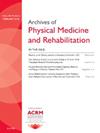美国服务人员和退伍军人腰痛物理治疗收入的不平等。
IF 3.6
2区 医学
Q1 REHABILITATION
Archives of physical medicine and rehabilitation
Pub Date : 2025-05-01
DOI:10.1016/j.apmr.2024.12.017
引用次数: 0
摘要
目的:探讨腰痛患者时间-物理治疗的不公平性。设计:回顾性观察性研究,利用来自国防部和退伍军人健康管理局临床和管理数据库的数据,这些数据库来自医疗记录、索赔和登记数据。环境:军队卫生系统、退伍军人卫生系统和民用医疗机构。参与者:2017年1月至2020年12月期间因腰痛寻求医疗保健的现役军人、退伍军人和退休人员,至少一年前没有腰痛诊断(N = 1252,959)。干预措施:不适用主要结局指标:腰痛诊断后13周内进行门诊物理治疗的时间评估。结果:大约9.4%的患者在诊断后的13周内接受了物理治疗师的门诊物理治疗评估。在分段指数加性模型中,许多协变量是时变的,因此在整个13周期间,接受物理治疗的概率会发生变化。在指标诊断后1周至3-6周内,黑人、拉丁裔、美洲印第安人和阿拉斯加原住民患者接受物理治疗的概率低于白人患者。在第5周和第7周,黑人和拉丁裔患者分别比白人患者更有可能接受物理治疗,这种情况一直持续到观察期结束。在整个观察窗口中,被分配为女性的患者相对于被分配为男性的患者有更高的可能性开始物理治疗,现役军人相对于退休军人和退伍军人也是如此。结论:在美国军事卫生系统和退伍军人卫生管理局,按种族和民族、指定性别和受益群体划分,在物理治疗的时间和接受方面存在不公平。规范转诊和实践模式,提高物理治疗服务的可及性,鼓励寻求健康的行为,可能有助于减轻在启动物理治疗中的不公平现象。本文章由计算机程序翻译,如有差异,请以英文原文为准。
Inequities in Physical Therapy Receipt of US Service Members and Veterans With Low Back Pain
Objective
To investigate inequities in time to physical therapy (PT) for patients with low back pain (LBP).
Design
Retrospective observational study using data from the Department of Defense and Veterans Health Administration clinical and administrative data repositories derived from medical records, claims, and enrolment data.
Setting
Military Health System, Veterans Health Administration, and civilian health care facilities.
Participants
Active duty service members, veterans, and retirees seeking health care for LBP between January 2017 and December 2020, with no LBP diagnoses for at least 1 year prior (N=1,252,959).
Interventions
Not applicable.
Main Outcome Measure(s)
Time to-outpatient PT evaluation within 13 weeks of LBP diagnosis.
Results
Approximately 9.4% of included patients received an outpatient PT evaluation from a physical therapist within 13 weeks of diagnosis. In a piecewise exponential additive model, many covariates were time-varying, such that the probability of PT receipt varied throughout the 13-week period. Black, Latinx, and American Indian and Alaskan Native patients had lower probabilities of PT receipt than White patients from 1 to 3-6 weeks after index diagnosis. At 5 and 7 weeks, Black and Latinx patients, respectively, were more likely to receive PT than White patients, which continued until the end of the observation period. Patients assigned female relative to patients assigned male relative had a higher probability of initiating PT across the entire observation window, as did active duty service members, relative to retired service members and veterans.
Conclusions
Inequities in the timing and receipt of PT exist in the US Military Health System and Veterans Health Administration by race and ethnicity, assigned sex, and beneficiary group. Standardizing referral and practice patterns, improving accessibility of PT services, and encouraging health-seeking behavior may help alleviate the inequities in initiating PT.
求助全文
通过发布文献求助,成功后即可免费获取论文全文。
去求助
来源期刊
CiteScore
6.20
自引率
4.70%
发文量
495
审稿时长
38 days
期刊介绍:
The Archives of Physical Medicine and Rehabilitation publishes original, peer-reviewed research and clinical reports on important trends and developments in physical medicine and rehabilitation and related fields. This international journal brings researchers and clinicians authoritative information on the therapeutic utilization of physical, behavioral and pharmaceutical agents in providing comprehensive care for individuals with chronic illness and disabilities.
Archives began publication in 1920, publishes monthly, and is the official journal of the American Congress of Rehabilitation Medicine. Its papers are cited more often than any other rehabilitation journal.

 求助内容:
求助内容: 应助结果提醒方式:
应助结果提醒方式:


